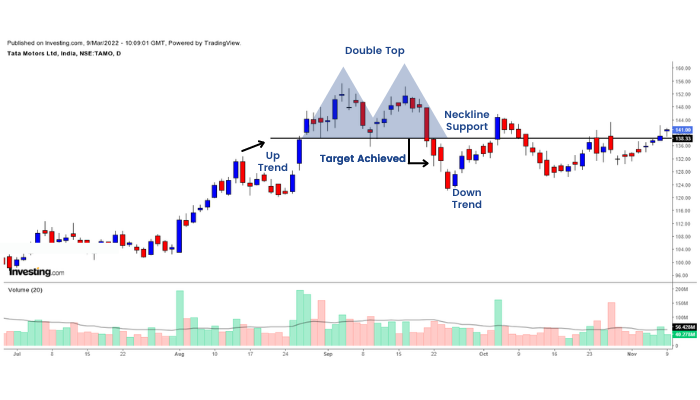Learn Trading for Free and Without Registration
An Online Glossary to Study Trading Independently
Reversal Patterns Double Bottom and Double Top
Reversal Patterns: Double Bottom and Double Top

Reversal patterns are a crucial element of technical analysis, helping traders identify points where a trend is likely to change direction. Among the most recognized reversal patterns are the Double Bottom and Double Top. These patterns appear on the chart when the market is preparing to shift direction, and recognizing them accurately can be the key to successful trading.
What Are the Double Bottom and Double Top Patterns?
•Double Bottom – This is a reversal pattern that forms at the end of a downtrend, signaling its potential end and a transition to an uptrend. It consists of two consecutive lows separated by a local high.
•Double Top – This reversal pattern forms at the peak of an uptrend, indicating a possible downward reversal. It features two consecutive highs separated by a local low.
How Are These Patterns Formed?
Double Bottom
1.The price reaches a low point (the first bottom) and then begins a correction upward, forming a local high.
2.After the correction, the price declines again, forming a second bottom at or slightly above the level of the first.
3.A subsequent upward move that breaks above the level of the local high confirms the pattern.
Double Top
1.The price reaches a high point (the first top) and then begins a downward correction, forming a local low.
2.After the correction, the price rises again, forming a second top at or slightly below the level of the first.
3.A break below the level of the local low confirms the reversal pattern.
How to Identify These Patterns on a Chart
1.Look for a trend: These patterns only form after a clear trend – a downtrend for the Double Bottom and an uptrend for the Double Top.
2.Identify key points: For a Double Bottom, these include two lows and a high in between. For a Double Top, it’s two highs and a low in between.
3.Wait for confirmation: A valid reversal signal is confirmed only after the price breaks the level of the local high (Double Bottom) or local low (Double Top).
How to Use These Patterns in Trading
1.Entry Point:
•For a Double Bottom: Enter a long position (buy) after the breakout above the local high.
•For a Double Top: Enter a short position (sell) after the breakout below the local low.
2.Stop-Loss Placement:
•For a Double Bottom: Place a stop-loss slightly below the second low.
•For a Double Top: Place a stop-loss slightly above the second high.
3.Take-Profit Level:
The potential target is determined by the distance between the extreme points (low or high) and the local high/low.
When Are These Patterns Effective?
•During a Stable Trend: Double Bottom and Double Top patterns perform best when there is a clear trend, providing reliable reversal signals.
•On Larger Timeframes: These patterns are more reliable on daily and weekly charts than on lower timeframes.
•With Volume Confirmation: An increase in volume during the breakout strengthens the validity of the signal.
When Are These Patterns Ineffective?
•In a Range-Bound Market: During sideways or low-volatility markets, these patterns may produce false signals.
•Without Strong Confirmation: If the breakout isn’t accompanied by an increase in volume, the signal may be unreliable.
•During High-Volatility Events: Major news events or sudden volatility can disrupt the expected behavior of these patterns.
Advantages and Disadvantages
Advantages:
•Easy to identify and understand.
•Applicable across different financial markets (Forex, stocks, cryptocurrencies).
•Clear entry and exit points.
Disadvantages:
•Require confirmation through volume or additional indicators.
•Prone to false signals during range-bound markets or on lower timeframes.
•Ineffective without a well-defined prior trend.
Conclusion
Double Bottom and Double Top patterns are reliable tools in technical analysis that help traders identify key reversal moments in the market. However, their success depends on accurate identification and confirmation of signals.
To use these patterns effectively, always adhere to risk management principles, analyze volume, and combine them with other analysis tools. Remember, trading is not just an art—it’s also a discipline.


